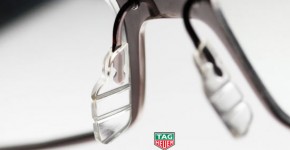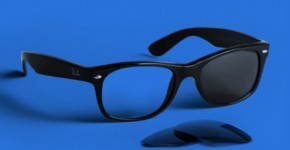How to Choose Sunglasses; What Should Be Considered When Choosing Color?

How should the lens color preferences be determined for the right sunglasses? What criteria should be considered when buying sunglasses?
Sunglasses come in a wide variety of sunglass (lens) colors. The most common ones are smoked, brown, green; yellow, orange and red. When shopping for sunglasses, choosing the best lens type for your lifestyle is undoubtedly the most thought-provoking part. It's important to be on the quest to find the perfect pair of glasses for you, but you must also take into account your daily activities such as driving, exercising and medical care. For some people, however, lens color is purely a fashion choice, so you may want to consider what color looks best on you.
You should consider a few methods when determining the color preferences you will make when buying sunglasses. Here are some ideas for you:
Method 1: Review Your Options
Try different colors. You may find that some colors are more comfortable for your vision than others. When purchasing new sunglasses, you should try pairs of lenses with various lens colors. Many opticians and sunglasses stores offer a variety of lenses that you can try. You can see that there are some differences between these colors, for example:
Smoked, brown, and green lenses are neutral. They reduce glare and eye strain without distorting colors.
Yellow, amber, and orange lenses increase contrast, but can distort colors. They also block blue light, which some believe can be harmful to the eyes. [one]
Red or rose-tinted lenses increase contrast, but they distort color more strongly than other hues.
Consider photochromic lenses. Photochromic lenses are lenses that change colors depending on how much light they absorb. These glasses can be adjusted from bright conditions to dim ones, but take a few minutes to adjust. They are more expensive than a regular pair of prescription glasses, although it eliminates the need for a separate pair of sunglasses. If you wear prescription glasses, you may want to consider investing in a pair so you don't have to switch between glasses in the middle of activities like driving. Typically, photochromic lenses will darken to neutral colors such as smoked.
Consider medium dark colors. You should aim for a shade about medium dark; If you can see your eyes while looking in the mirror, these colors that are not dark enough are actually the appropriate lens color. Unless you live in a very bright area, you don't need to buy very dark lenses. Darker lenses don't block more UV rays, they just make it harder for you to see. It is important that you buy glasses that you can see clearly.
Invest in a few pairs of glasses. If you need different types of colors for different events, you may want to consider purchasing several pairs of glasses in different shades. You can have one pair for driving and another pair for sports. If you do more than one sport, you may find that you have a different pair for each activity. This gives you convenience in your activities.
Method 2: Determining the Best Color for Your Needs
Consider what you will use the sunglasses for. The type of activity you do can determine the right sunglasses color for you. Think about when you wear your sunglasses the most. While every shade of sunglasses will protect your eyes from UV rays and help you see on bright days, certain colors can increase the efficiency of certain tasks.
For driving, smoked and brown colors work best to block out light colors. Yellow and amber are not recommended because they can discolor traffic signals.
Smoke, green-smoke or brown lenses are recommended for pilots. [1]
If you need glasses for boating or fishing, try wearing pink or rose colored glasses.
Weather factors for your location. Consider the climate you live in. Different colors or shades will be more effective in different weather conditions. A better color for bright sunny days if you live in a sunny area; if you live in the north you may need to buy good sunglasses in snowy weather.
Brown, amber and smoked sun glasses are perfect for sunny or cloudy days.
Green sun glasses are good for most weather conditions, including rain.
Amber tinted lenses are perfect for foggy or hazy conditions, including heavy air pollution. It can also be preferred at night.
Red, pink, blue and purple sun glasses are good for snowy and misty conditions.
Match your sunglasses to your sport. If you are busy with a sport, some colors can give you an advantage. Finding the right colored lens for your sport can help you filter out distracting colors and notice small details. The sun glasses you should choose according to the sport you do can be:
Tennis: smoked, brown or yellow is best.
Golf: yellow, kehribar and brown are good for general games. It might be good to put red and rose green.
Skiing: amber, yellow or orange is usually recommended. Rose-tinted lenses can also help you in low-light conditions.
Running: Brown, yellow, or rose are all good options, but neutral colors like gray and green also work well.
Baseball: amber, brown or green is recommended.
Consult your doctor. If you have eye conditions such as glaucoma (eye pressure), or cataracts, you should talk to your doctor about which colored lens is right for you. You may be advised to find a neutral lens that will block harmful UV rays without spoiling the color too much, or a yellow or yellow lens may be recommended to increase your contrast.
Mirror-coated sun glasses can help for glaucoma. These are glossy outer coatings that reduce glare but do not distort colours. They come in almost any color, but unlike regular lenses, the color of the mirror coating has no effect on your vision.
If you have macular degeneration (yellow spot disease), amber lenses can help while you're out. Apart from this, smoked colored glasses should be preferred while driving.
Method 3: Finding a Color That Fits Your Style
Consider your skin. If you have fair/white skin, you may have to choose a different colored lens than those with dark/warm skin. Determine your skin tone. If you have pink or blue undertones, you have a cool, white/light complexion. If you have yellow undertones, you have a warm, dark complexion.
Cool/light skin should wear blue, purple, rose, smoky or green tinted sun glasses;
It may be more appropriate for warm/dark skin to choose red, yellow, brown, yellow or orange colored lenses.
Stay classic with a neutral tone. If you want a vintage or classic look, you should stick to neutral tones such as brown, smoky, dark gray or green. These colors never go out of style and draw attention to the shape of your glasses rather than the hue.
Flash the environment with mirrored sun glasses. Mirror coated lenses have a glossy outer layer that gives your sunglasses a polished shine. Mirror coatings can reduce glare without spoiling any color. You can choose almost any color for your mirror finish without affecting your vision. Some even come in multiple colors. There are even half-mirror models available.
You can buy mirror-coated glasses or ask your optician to fit mirror-coated lenses to your frames.
Try soft, pastel lenses. If you don't like the darkness of your sunglasses, pastel lenses are another option. These pastels (soft tinted sunglasses) light shades may not block out much light, but they will give you a cool, summery look. Lighter shades can block UV rays, so ask for sunglasses labeled as 100% UV protection. Some shades you might consider: soft orange, soft rose, soft Lavender, soft blue and soft gray tinted sun glasses.
Clue
Most sunglasses tints will help block out light no matter what activity you're doing. While some hues can enhance certain sports and events, most colors are good for any condition or occasion.
Color and darkness have no effect on how well a lens blocks UV rays. Always make sure of the quality of sunglass to make sure the lens can block 100% of UV rays.
References
1.https://www.faa.gov/pilots/safety/pilotsafetybrochures/media/sunglasses.pdf






